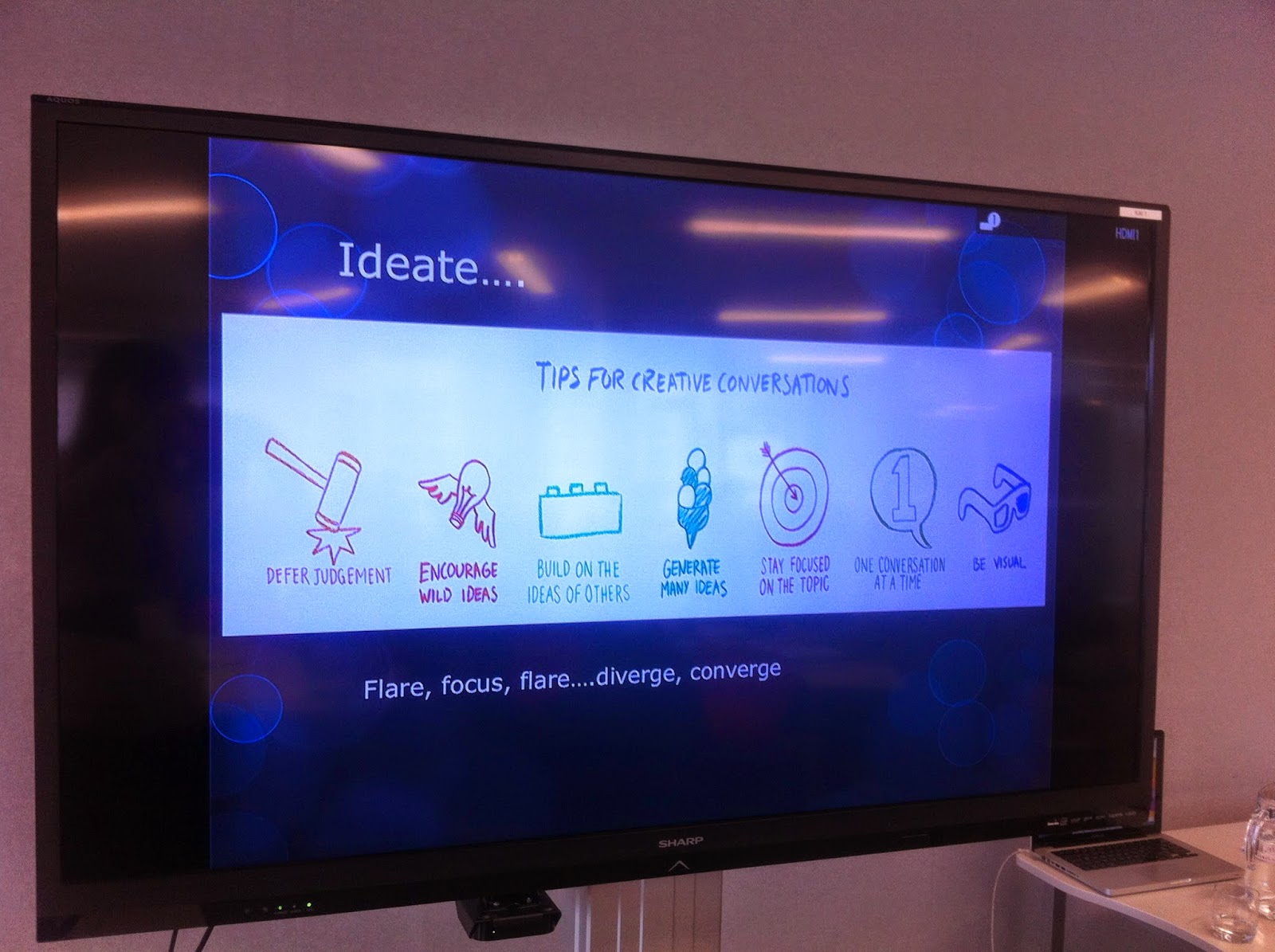Got opportunity to go back and strip away the layers and try and do things better by designing teaching based on the curriculum.
Never fully trust technology :)
Design thinking come really fashionable because business found they needed designers to keep things innovative. Education now realised they need to innovate or die.
Design thinking is getting people innovating
Really challenging - reflect on journey. Go back to the beginning and figure out what the really important stuff is.
Be agile, be able to flex, a sense of discovery and play inherent in the processes - allow you to innovate.
Once the process becomes embedded, it becomes natural.
What's going on in designers' brains that allow them to innovate?
How did we get to the inventions that we have today?
What the *** is design thinking?
People who can do this really well are able to flex incredibly quickly between types of thinkingDeduce / Induce
Designers can flex very quickly between the two and feel very comfortable of discomfort, change, not knowing what the solution is, "let's scratch beneath and find out what the problem might really be".
Empowering to teachers and students - need to be comfortable with the uncomfortable, happy to be in the state of not knowing what the answer may be.
21C requires:
flexible, resilient thinkers,
Creative fluency and innovation
Problem solvers and problem finders
So how might we?
Develop these fluencies
Mover from what to what if?
Embrace failure as valuable learning?
Developing agile thinkers
end user > user centered
understand > insight
solve > find
adapt > innovate
How is the experience for a kid? Follow a student for a whole day or whole week and see what the day looks like for them.
Moving from problem solving to problem finding then problem solving
Challenge set the Stanford Business school - develop cheaper incubators for the babies
But there were incubators without babies - why do they need more?
Babies weren't getting to hospital because they were too rural.
Designed embrace baby warmer to keep the baby warm while they transport the babies to the hospital and into the incubator to help.
What's the real story?
Literacy rates are horrible - but why is that?
Go back to the problem, don't band aid the apparent problem. What's causing the problem?
Empathise, define, Ideate, Prototype, Test
1. Discovery: I have a challenge, how do I approach it?
2. Interpretation: I have learned something, how do I interpret it?
3. Ideation I have an opportunity, What do I create?
4. Experimentation I have an idea How do I build it?
5. Evolution I tried something, How do I evolve it?
If you wait until you've got the perfect product, you're 10 years too late!
The kids already know - just open the doors and let them get on with it.
Explore: What's your story?
Discover empahise, seek stories, explore feelings, ask why
Define: zoom in, insight, problemfinding, reframe
Ideate: quantity for quality
Prototype: Test possible solutions
Iterate: Feedback and refine
Experience: Gift giving
Pen and Paper - blended learning and hands on thinking time! Photos to come.
Disconnect happens when the product doesn't match the expectations of the recipient.
Makerspace!!
How can we learn this to help our teaching? - We should be focusing on what we do for/with the kids rather than what we are doing TO them.
Kids love modelling stuff - I do too! Had lots of fun creating my prototype.
What are the real questions we're asking?
We've got to get our literacy rates up - did we actually talk to the students and find out why they didn't do well? What is the real problem? Resonate with and meet the real problem rather than put a band aid over the problem.
How do we close the gap? You can't change a person's values and feel for learning - what they enjoy and what works well for them. You close the gap by bridging the gap by designing your lessons for the kids in your class.
HPSS
So what? (Critically reflect and evaluate)
- share
- explore
- make sense
- focus
- generate
- test
- refine
Common language - frame all the learning within it - across the school - everyone says the same thing.







No comments:
Post a Comment